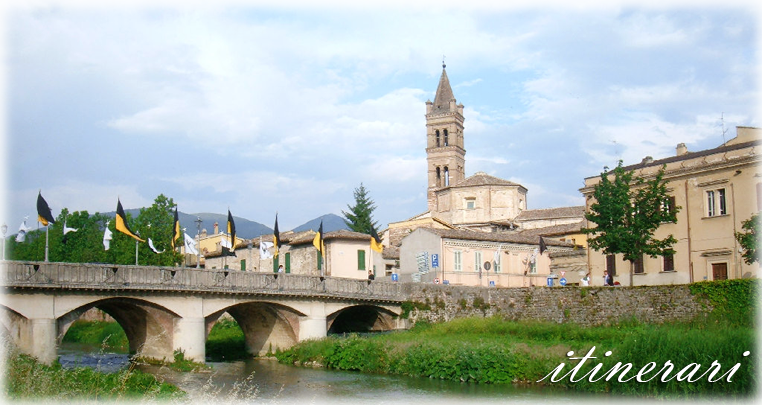![]()

Itineraries
• Exploring the cities of the Umbrian Valley SPELLO Perched on a spur of Mount Subasio, rich with Roman traces (including the Consolare, Arco Romano and Venere gates, imposing entry ways to the Roman city), at one time Spello was under the Baglioni rule. This family commissioned their noble chapel, next to the church of S. Maria Maggiore , to be sumptuously frescoed by the artist Pinturicchio, thereby giving life to one of the most important masterpieces of 16th century painting. FOLIGNO The historic centre of this busy, lively city rotates around its grand Romanesque Duomo, which underwent various restorations up until the Neoclassical Age, and the nearby Palazzo Trinci, built between the 14th and 15th century for the city's nobility. The church of S. Maria Infraportas (11th & 12th century) houses numerous pieces of Medieval frescoes. The Sassavivo Abbey rises up just outside Foligno (approximately 6 km ). It was founded by Benedictine monks in the 11th century around a spring by the same name. During the Middle Ages it served as an important study centre. BEVAGNA is famous for its splendid town square, a virtually perfectly intact example of the Medieval environment. The important Romanesque churches of Saints Silvestro (1195) and Michele Arcangelo (late 12th century) look out towards the square. The town also has an impressive expanse of Medieval walls that were built on top of pre-existing Roman walls. MONTEFALCO "A little piece of heaven fallen to earth", , Montefalco gave life to an impressive eight saints over the centuries. This charming, compact Medieval village is arranged in a spiral around the Piazza del Comune square which is 'presided over' by numerous churches. Of particular interest is the 14th century church of St. Francis with its myriad of frescoes from various Umbria artists from the 14th and 16th centuries.

